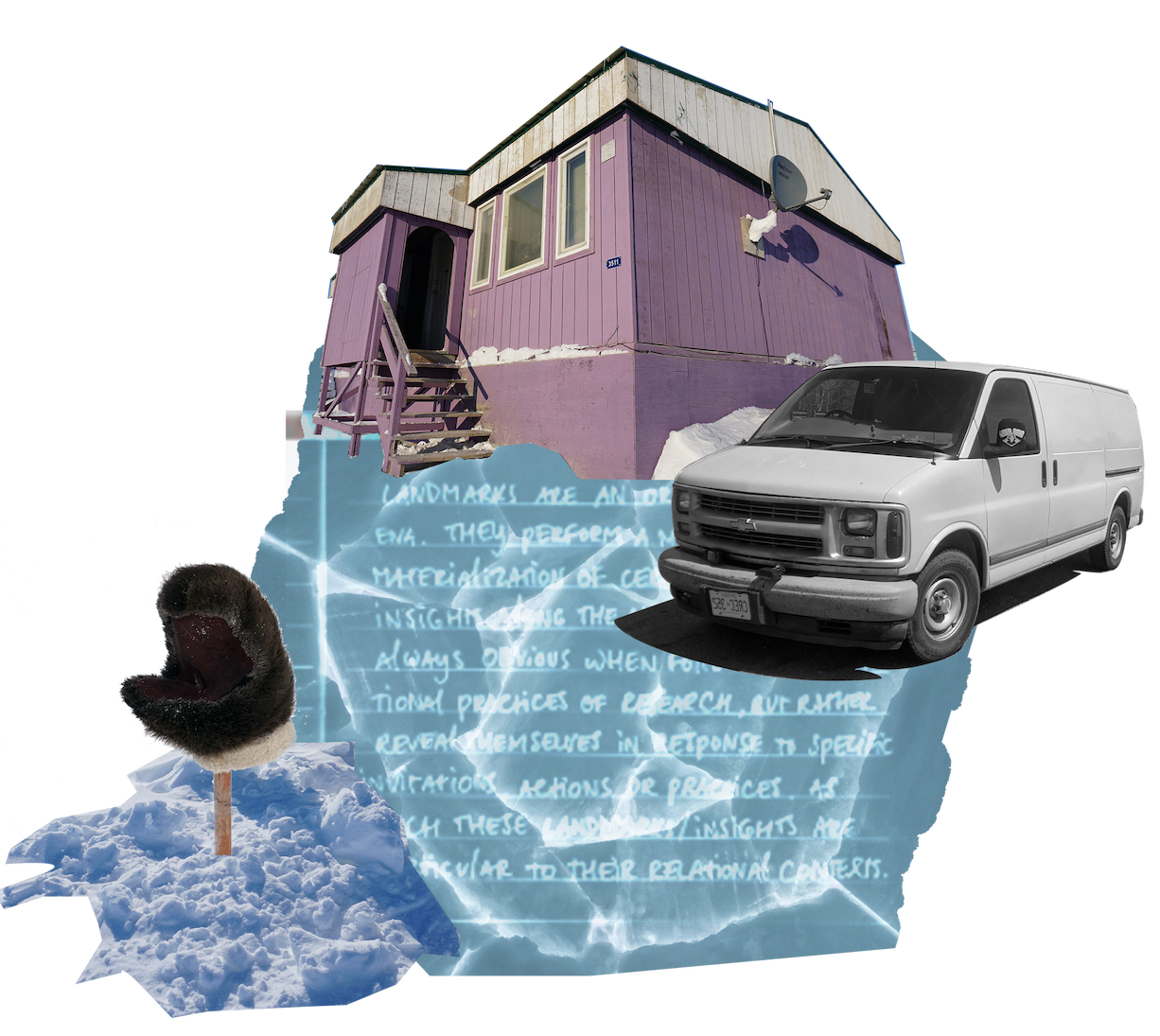Multiple Sites of Enunciation: Difference between revisions
Created page with "thumb Media or Art that plays with knowledge and perspective (EEE?) Taking our cues from Jones and Jenkins (2008), we conduct a ‘negotiation of voice’- we make explicit who speaks, and how our collaborative authorship is navigated. To clarify which of our respective voices are present, each narrative output states first who ‘we’ refers to in it. Such visible differentiation and shifting of voices, both eliminates the impression that this p..." |
No edit summary |
||
| (19 intermediate revisions by 2 users not shown) | |||
| Line 1: | Line 1: | ||
[[File:Landmark.png|thumb]] | [[File:Landmark small.png|thumb]] | ||
The landmark, as a figure, has itself lots to teach us about how to acknowledge and relate to the tension of our differences, when it comes to our entanglements within the overarching polar bear management and monitoring apparatuses | |||
The point here is not to argue whether or not we are looking at the same rock formation, and to agree on how it has changed over time. Neither is it the point that our subjective views change the way that the rocks present themselves to us. | |||
The point here is that the rocks can are not determinable as separate from ourselves, our position in the landscape, where we have been and where we are going, when we consider ourselves part of the everchanging landscape. | |||
A practice of lateral movement unfixes the rocks as not just something than can be located out there, but rather as something that can also locate us, and the many other other material agencies that make it possible for us to encounter the rock formation. | |||
< | <div class="next_choice"> | ||
'''"Return"''' to Cut 1 to learn more about how our co-creative practices around the "Voices of Thunder" testimonies, helped us (re-)locate our bodies on such lateral tracks.</div> | |||
<span class="return to-cut-1 link" data-page-title="Multiple Voices" data-section-id=" | |||
<small><references /></small> | |||
<span class="return to-cut-1 link" data-page-title="Multiple Voices" data-section-id="2" data-encounter-type="return">[[Multiple Voices#Voices of Thunder Testimonies|Return to Cut 1: Voices of Thunder]]</span> | |||
Latest revision as of 14:56, 18 July 2025

The landmark, as a figure, has itself lots to teach us about how to acknowledge and relate to the tension of our differences, when it comes to our entanglements within the overarching polar bear management and monitoring apparatuses
The point here is not to argue whether or not we are looking at the same rock formation, and to agree on how it has changed over time. Neither is it the point that our subjective views change the way that the rocks present themselves to us.
The point here is that the rocks can are not determinable as separate from ourselves, our position in the landscape, where we have been and where we are going, when we consider ourselves part of the everchanging landscape. A practice of lateral movement unfixes the rocks as not just something than can be located out there, but rather as something that can also locate us, and the many other other material agencies that make it possible for us to encounter the rock formation.
